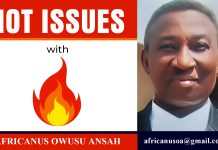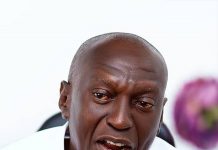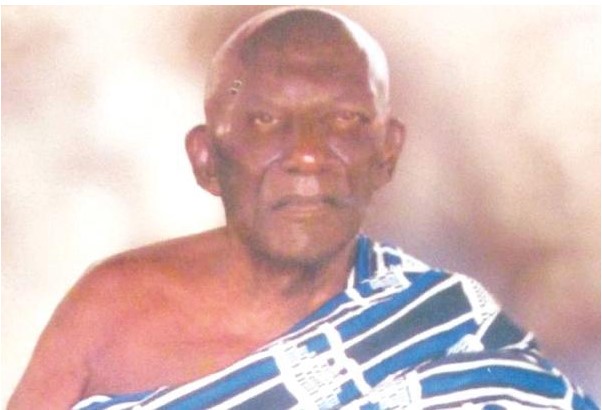
INTRODUCTION
I have grabbed my pen to write about Baffour Osei Akoto, the founder of the National Liberation Movement (NLM) for very good reasons.
The opening words for my caption “Nsuo Bedum Gya Akoto ee” literally means “Water will extinguish the fire.” When this phrase or song or whatever one will call it was coined, I was not born yet, but I came to hear about it growing up and it still rings in my mind and I am fascinated by it. Hence, when I decided to write about Baffour Osei-Akoto, this “tension time” war cry came into my mind. I am told ‘ Nsuo Bedum gya Akoto ee’ was the rallying cry of the CPP at that time which was elicited by the rallying cry of the NLM. Akoto was ‘ogya’ who took the Gold coast political and particularly the CPP by storm.
Baffour Osei is widely acknowledged as the founder of the National Liberation Movement (NLM) from which sprung the UP tradition. The reasons that led to the formation of the NLM have been handled in a competent fashion by celebrated writers, historians and political scientists such that there is not a lack of knowledge about the subject. That notwithstanding I will still look at the reasons for the formation of the NLM to capture its relevance even today.
The UP tradition that is talked about presently is an established political tradition which started with Baffour Akoto’s NLM. Baffour’s role will be assessed over and over again perhaps insome cases re-assessed in the political discourse of Ghana, then Baffour Akoto’s politics will be seen as a heroic episode in a great historical development. As Baffour is re-assessed it would then become important to find out whether the political tradition that has emerged out of his heroics has given him the necessary recognition.
BIRTH OF THE NATIONAL LIBERATION MOVEMENT (NLM)
The birth of the National Liberation Movement has been categorized into remote and immediate causes by writers who have delved into the factors that led to the formation of the movement. In the works of all the writers, it has been presented that the immediate precipitating factor was the cocoa price issue and preponderance has been given to it as such.
However, the underlying factors or remote causes cannot be underestimated as they presented swelling grounds of discontent, dissatisfaction and anger that exploded with the cocoa price issue. The reason for this assertion is that from the time of Sir Allan Burns 1946 Constitution, up to 1954, when the NLM was formed events had moulded hard and firm into the thinking that the colonial government had taken Asantes for a ride in bringing them into the legislative assembly together with the colony for the first time in order to give the Gold-Coast colony a geographical expression. This sentiment was captured by W.M. Hailey who correctly observed that at one period Ashanti national sentiment undoubtedly looked forward into the country into a separate political unit, in which the confederacy council would be the recognized organ of the legislative and the administrative authority. But the political integration of Asante with the Gold Coast Colony effected by the constitution of 1946 has for the time diminished the general interest in this aspiration, nor does there in fact appear to be any substantial grounds for its revival.
Indeed, there was the expectation that Sir Allan Burns was going to give Asante its own constitution. This expectation never materialized. As far back as October 1942, the Asante confederacy council adopted a resolution to the effect that it was neither appropriate nor desirable for Asante to be represented in the legislative council of the Gold-Coast colony. However, Asante changed its mind and demanded representation on the legislative council in 1943.
- Inadequate representation in the legislative assemblies of 1946 and 1954/
In the legislature under the Burns constitution, Asante was given four seats and this was regarded as grossly inadequate in view of the economic potential and size of Asante. During the debate on the report of the commission of enquiring into the disturbances in the Gold-Coast in 1948, Mr E.O. Asafo-Adjaye one of the Asante representatives in the legislative council averred that “regard should be given to equality of representation of the territorial units in the country, namely, the colony, Ashanti and the Northern territories and that there should be no preponderance of representation of anyone territorial unit.” (P. 31, struggle against dictatorship.)
In much the same way, the Van Lare commission report which dealt with the delimitation of constituencies for the 1954 legislative assembly elections was met with strong protest by even CPP members. The Asante members of the legislative assembly, party affiliation notwithstanding were united in pressing their demand for 30 seats. This is what Krobo Edusei ministerial secretary to the Ministry of Justice said on the matter. “I have got a mandate from CPP members in Kumasi to ask for 30 seats. As I have already stated, this matter cropped up during the Coussey Committee meeting and the only compromise which was arrived at was that Ashanti should be given one-fourth of the representation… We are not asking for more, we are asking for 30 seats (ref Dennis Austin, Politics in Ghana P. 178). Eventually, Asante was handed 21 seats. There was the general feeling that Asante’s interests had been sacrificed on the altar of the union with the component units of the Gold-Coast in terms of representation in the Legislative Assemblies and this rankled in the minds of a considerable number of Asantes including even CPP members.
- CPP Rebels
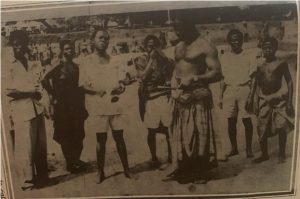
Richard Rathbone, in his research, Opposition in Ghana: The National Liberation Movement,” reveals that the driving force behind the formation of the NLM were those very youngmen who had spearheaded the CPP drive into Asante between 1949–1951. He singled out the CPP rebels and their comrades in the Asante Youth Association (AYA) as the catalyst for the political upheavals of the mid-1950s.
WHO WERE THESE CPP REBELS?
They were the discontented CPP members in Asante. The cause of their discontent was the choice of candidates for the 1954 general elections, this became a problem for the party. In many constituencies in the twenty-one seats up for grabs in Asante, the locals rejected the candidates selected by Nkrumah and the CPP’s central committee and submitted their candidates for registration defying the central committee authority. Nine days before the election, these Asante candidates were among the “81 rebels” as Nkrumah referred to them were publicly expelled from the CPP at a rally held in the Subin valley. The rebels became opponents of the CPP and galvanized opposition in Asante against the CPP.
- THE COCOA PRICE ISSUE
Now, the big issue widely known to have led to the formation of the NLM was the cocoa price.
Baffour Akoto says on page 34 of his autobiography (Struggle against dictatorship) that the immediate cause which led to the stiff opposition stance by the Asantes was the treachery and dishonesty in the fixing of the cocoa prices. On August 13th, 1954 the government passed the cocoa duty development funds bill which fixed the price of cocoa at 3pounds.12 shillings per 60 lbs load a price which represented only 1/3 of the average world market price. This was contrary to the electioneering campaign promise and even a new £5 note had been introduced to facilitate that payment. All attempts to get Nkrumah and his CPP government to accept a compromise of £4 proved futile.
Baffour Akoto narrates “At my residence, I was approached by messers Osei Assibey Mensah, Opanin Tawiah, Kusi Ampofo and six others who complained bitterly to me about their disappointment with the CPP. Inspired by the fact that the young men were staunch CPP members, I asked them to go and return the next evening. I consulted my Lord, the Asantehene and other prominent Asante people who were much against what was happening especially the dictatorial tendencies being exhibited by Nkrumah and his henchmen in the CPP…” I invited the gentlemen again into my house and we decided to call a rally and inaugurate the National Liberation Movement (NLM) (Ibid p. 35)
Within some few weeks, Asante opposition to the cocoa price assumed gigantic dimensions and became the vanguard of the struggle against Nkrumah and his CPP and this is how the “Ashanti Pioneer” owned by John Wallace Tsiboe who had opposed the CPP from its birth captured it in its editorial: Great Events … from little causes spring. Like an innocent match flame, the strange attitude of the All African CPP government to the simple demand for a higher local price of cocoa has gone a long way to threaten to set ablaze the petrol dump of Asante Nationalism. (Pioneer 4 September 1954). On Saturday 19th September 1954, Baffour Akoto’s National Liberation Movement (NLM) was born and inaugurated in Kumasi with a crowd of over 40,000 at the Prince of Wales Park, Kejetia.
Support for the NLM came from political parties already in existence. These included the Muslims Association Party (MAP), Togoland congress (TC), Ghana Congress Party (GCP) and the Northern Peoples Party (NPP). The most enthusiastic support however came from the ranks of the Ghana congress party with many of its supporters like Mr. H.R Annan (Father of the late UN secretary general MR. Kofi Annan). Who was the regional chairman of the Ghana congress party. On the day of the inauguration Mr. Nii Amaa Ollennu leader of the GCP announce at Manya Krobo that he was in sympathy with the events which led to the Ashantis to demand a federal system of government. (Refer the quills of the porcupine page 52).
BAFFOUR AKOTO’S NLM AND FEDERALISM
From its, very inception, Baffour Akoto’s National Liberation Movement believed in federation as the best means of checking abuse of power and the dictatorship of the centre. The justification according to the NLM founder was that: “there was not enough national identity or consciousness to make a democratic unitary government possible. In the absence of this consciousness, the safest course is to ensure that the powers of government are not all concentrated at the centre, but the substantial part of power must be retained in the component territories where people have learnt the habits and attitudes of living together for some time” (refer page 50, the struggle against dictatorship).
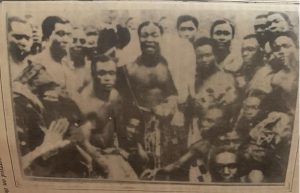
The NLM assured the country that “Federalism is not the same as separatism, it is another form of national unity.. with added advantages that it checks those selected to guide the national or federal affairs of the country of any dictatorial tendencies, gives the component regions or states the freedom to direct their internal affairs. …We in Asante are convinced that a federal constitution is the surest means of closing the avenues for dictatorship (Ibid p. 48).
It is important to take note here of the NLM strenuously disengaging itself from separatism. The slogan of the NLM for want of a better word in Twi for federation was ‘mate me ho’ or ‘ye te yen ho’ which loosely translates as “ I have separated myself or “we have separated ourselves”. This slogan was used by the CPP to deride the NLM as a separatist movement and even as of today it is used by some people derogatorily to describe the off-shoot of the NLM – The NPP.
Perhaps Baffour’s desire for a federated political arrangement was derived way back when the idea of independence for the Gold-Coast was conceived.
It is revealing to note that as far back as October 1942, the Asante confederacy council adopted a resolution to the effect that, it was neither appropriate nor desirable for Asante to be represented in the legislative council of the Gold-Coast colony. Asante was happy with its confederacy council. (Ibid p. 27). This position was echoed by the colonial governor, Sir Allan Burns, writing to the colonial office in 1948 reported that following the restoration of the Golden Stool on its lands in Kumasi in 1942, the Asantes had now assumed full authority over their land and for that matter had become autonomous and had nothing in common with the colonies or the Northern territories and the protectorate of Togoland.
Further, speaking to a delegation of chiefs from the colony in October 1943, the Asantehene informed his audience “This is not the first time that we have realised or been made to realise the need for co-operation between Asante and the colony” and traced the obstacle to their coming together to “selfishness, the outcome of a narrow and conservative way of thinking … There has been lurking in the breasts of some of you in the colony, the fear that if you fall in with Asante, we shall seek to dominate you … I would like you to dispel any such uncalled fears for the days of our imperialistic aspirations are past and forgotten. What we aim at now is not that sort of federation which inthe past we tried to force on you with the sword; but one in which all of us, on our own accord shall freely enter. It is to us a federation based not on subjection but on love.” (Ibid p. 30). It is obvious from this statement by the Asantehene that even before the commencement of the struggle for independence, Asante had sought a “loose form of association with the rest of the country based on federation.

Bottom Left: Bin Laden, (Middle) Amadu Baba, (Right) R.R Amponsah.
Baffour Akoto reveals that after this historic meeting, the joint provincial council of chiefs, the Asante Confederacy Council and the municipalities submitted a joint proposal to the governor, Allan Burns for Independence for the Gold-Coast. Further, he puts it on record for the sake of posterity that it was that joint efforts of the traditional rulers of this country who took concrete steps to demand INDEPENDENCE and was ably supported by the Intelligentsia who later followed up with other resolutions.
Baffour Akoto had a steadfast belief in Federalism as the best political arrangement for the development of the country and he held on to it until his death. He saw in the federal arrangement as the bulwark against the creeping dictatorship of Kwame Nkrumah and his CPP and never relented in pursuing the federal principle.
Baffour Akoto asserts that “throughout my political career, I have always maintained that it is only a decentralized arrangement which will facilitate the rapid balanced development of the country.” He strongly believed and rightly so that “Democratic decentralization promotes greater participation of the people in the administration of their localities where they have the relevant knowledge and experience to determine their own priorities. (Refer to p. 95 struggle against dictatorship).

Baffour Akoto was a sage and a trail-blazer in the concept of decentralization and it was not only unfortunate but also pure mischief that the demand for local participation in government was interpreted by his rivals to mean “separatism.” Today, Baffour Akoto stands vindicated as decentralization and a revenue-sharing module for local government have found their way into the 4th republican constitution and with a clamour for more devolution of powers to local authorities.
FROM NATIONAL LIBERATION MOVEMENT (NLM) TO UNITED PARTY (UP)
Baffour Akoto’s National Liberation Movement (NLM) contested the independence election in conjunction with its allies, namely the Muslim Association party (MAP) Togoland Congress Party (TCP), Ghana Congress Party (GCP) and the Anlo Youth Organisation.
Baffour Akoto played a pivotal role in bringing all the other parties into the united party, without his strong and and respected leadership, it would never have happened. Both Danquah and Busia came into the fray through Baffour Akoto.
After winning the Independence Elections, Kwame Nkrumah disabled the NLM and its allies with the passage of the Avoidance of Discrimination Acton December 31st 1957. The law kicked in, in 1958 and outlawed parties based on race, region or religion. Consequently, Baffour Akoto’s NLM and its Allied parties were outlawed and in its stead emerged the United Party (UP).
THE POLITICAL AND TRADITIONAL VISSICITUDES OF BAFFOUR AKOTO
Kwame Nkrumah was not playing the bluffing game when he got enacted the preventive Detention Act in 1958. He crippled the opposition United party by throwing its leading members and even ordinary members into detention without trial and Baffour Akoto was one of them.
Baffour, narrates how he was arrested on Wednesday 11th November 1959 and together with seven other people namely, Nana Assiby (Anyinasehene), Osei Assibey Mensa, Mallam Alidu Kramo, Nana Antwi Bosiako (Nkofehene) Kwaku Danso, A.K. Adusei and B.K Owusu. (refer to p. 59 – 60 Struggle against Dictatorship). It was a baptism of fire. Baffour sums up his life in prison in these words. “one’s life is not one’s own. One is under strict prison authorities, and you do exactly what they order you to do… (ibid p. 62)
As a family man Baffour concedes that while in prison his first concern was for his children, thirty – four in all and says he was naturally worried about how they were to be catered for particularly in their upbringing. The strong-willed Baffour Akoto discloses that his gloomiest day in prison life was when he learnt from Ofei Assibey Mensah, that his son Kwame Butuakwa had died and had been buried two years ago without his knowledge.
By Victor Owusu (Jnr)
To be continued

